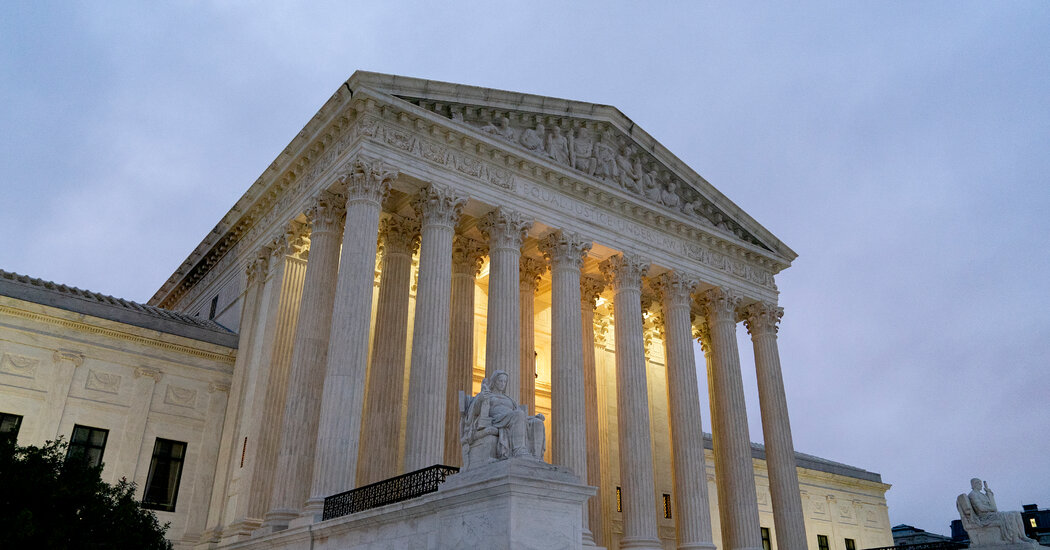
“When we issue an opinion, we are aware that every word that we write can have consequences, sometimes enormous consequences,” Justice Samuel A. Alito Jr. said last month. “So we have to be careful about every single thing that we say.”
A fascinating new study of the extraordinary impact of a tiny typographical error in a Supreme Court opinion almost a century ago illustrates the point.
The mistake appeared in a slip opinion issued in 1928, soon after the court announced a decision in a zoning dispute. It contained what seemed like a sweeping statement about the constitutional stature of property rights: “The right of the trustee to devote its land to any legitimate use is property within the protection of the Constitution.”
But the author of the opinion, Justice Pierce Butler, had not meant to write “property.” He meant to say “properly.”
Slip opinions are preliminary and subject to editing. They are eventually supplanted by the authoritative versions in hardcover books.
The court eventually fixed the mistake, and this is what appears in the final version of the opinion published in book form in United States Reports: “The right of the trustee to devote its land to any legitimate use is properly within the protection of the Constitution.”
Though the opinion was amended, the court did not draw attention to the change and the correction went unnoticed in much of the legal world.
The wrong version of the statement has appeared in at least 14 court decisions, the most recent of which was issued last year; in at least 11 appellate briefs; in a Supreme Court argument; and in books and articles.
Michael Allan Wolf, a law professor at the University of Florida who discovered the mistake and traced its history in the new article, to be published in The Washington University Law Review, said it was the worst sort of typographical error.
“It is a real word,” Professor Wolf said in an interview. “It makes sense in context. And it changes the meaning.”
He said it was impossible to know whether the incorrect statement affected the outcome in the cases in which judges considered or cited it.
“We’ll never know the answer to that,” he said, “though if we have judges who favor the private property owner at the expense of the government, I think it could be more than just icing on the cake.”
In all, though, Professor Wolf said, the oft-cited mistake served to amplify one view of property rights.
“It gave an additional argument to the private property rights movement,” he said. “And they have been very successful almost every time in pushing new theories. And this is a big one, because it supports the almost commonly held notion that you have a right to do on your property what is reasonable.”
“That’s not the way it works,” he said. “The way it works is that the government has the right to place reasonable restrictions on your use of property. I know it’s subtle, but that’s a big difference.”
The 1928 typo, Professor Wolf wrote, has “spawned a legacy of misrepresentations” and given rise to “a reign of error.”
The court’s practice of editing its opinions after they were issued without public notice, one it has now abandoned, was long a subject of internal criticism.
What to Know About the Supreme Court Term
A blockbuster term begins. The Supreme Court, now dominated by six Republican appointees, returns to the bench to start a momentous term this fall in which it will consider eliminating the constitutional right to abortion and vastly expanding gun rights.
By making a “considerable number of corrections and editorial changes in the court’s opinions after their announcement and prior to their publication in the United States Reports,” a court official wrote to Chief Justice Warren E. Burger in 1984, “we actually operate a system that is completely at odds with general publishing practices.”
In an internal memorandum in 1981, Justice Harry A. Blackmun said the court operated “on a strange and ‘reverse’ basis, where the professional editing is done after initial public release.”
These days, the Supreme Court is much better about publicizing its errors.
That is a consequence of changes instituted by the court in response to a 2014 article by Richard J. Lazarus, a law professor at Harvard, who disclosed that the justices had long been revising their opinions without public notice, sometimes amending or withdrawing legal conclusions.
Starting in 2015, the court has been noting revisions on its website. Of the 22 decisions in argued cases issued in June, for instance, eight required revisions, resulting in 30 separate changes.
The opinions in Fulton v. Philadelphia, a major decision on gay rights and religion issued in June, were changed three times to make 10 alterations. Most of them were in Justice Alito’s concurring opinion.
Professor Lazarus called the court’s new transparency a welcome development, adding that the volume of revisions was a good sign.
“They’re doing much better in being willing to acknowledge their mistakes,” he said of the justices. “Indeed, the fact that they have to acknowledge them probably makes them more careful. I think there would be more mistakes being made if they didn’t acknowledge them.”
Mistakes may still go uncorrected, though, in legal databases and other secondary materials. In an immigration case in April, Justice Neil M. Gorsuch initially wrote that the government must provide some immigrants with “a single complaint document explaining what it intends to do and when.” He revised the sentence the next day, having meant to write “compliant document.”
The error lives on, though, in the online archives maintained by Cornell Law School’s Legal Information Institute and in a summary description of the case on Lexis, a legal database.




